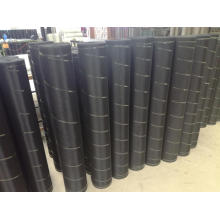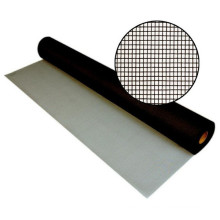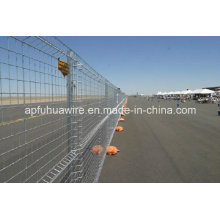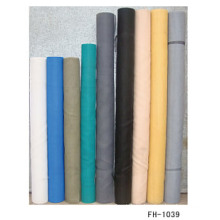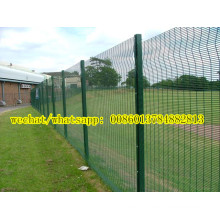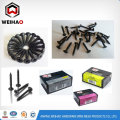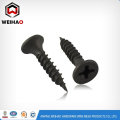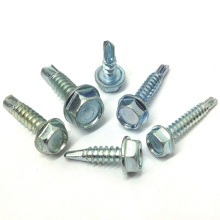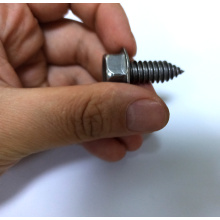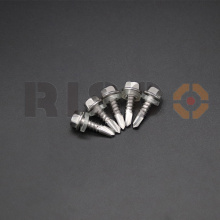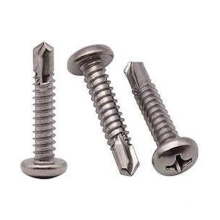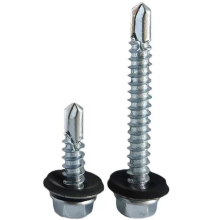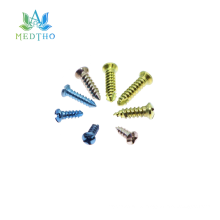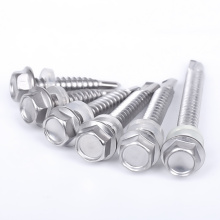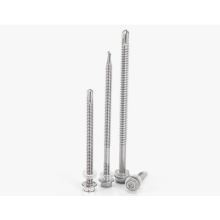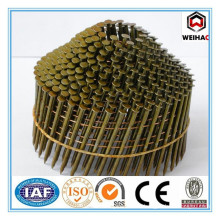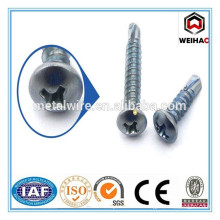carbon steel black drywall screw
Basic Info
Model No.: 3.5x25
Product Description
Drywall Screw 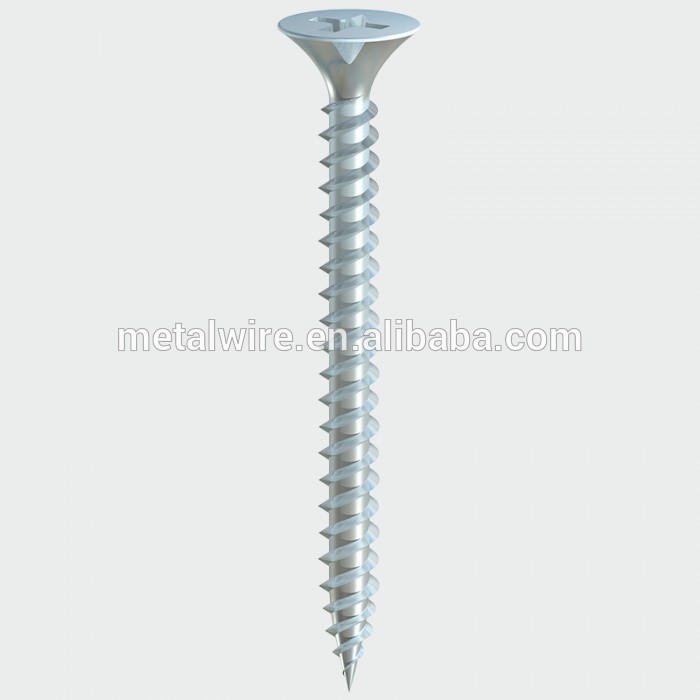 drywall screw manufacturer Details
drywall screw manufacturer Details
.drywall screw’s size is as below:
Description Drywall Screw PH2 - BZP
Colour/Plating Zinc
Recess Type Phillips
Pack Type Box
Selling Unit 1
MOQ 1
Pack Qty (Pcs) 500
Head Type Bugle
2. What is drywall screw? drywall is a type of building material made from gypsum and other minerals pressed between sheets of heavy paper. It is installed on walls and ceilings using a type of fastener known as a drywall screw. This fastener can be used to secure the drywall to either wood or metal framing members, and is designed to minimize dimpling on the face of the walls. Traditional nails tend to leave small holes in or divots in the drywall, and can even come loose over time. Drywall screws are threaded to grip both the drywall and the framing members tightly, and provide a much more secure and long-lasting installation over time.
In a typical installation, a drywall screw is placed into each sheet every 16 inches (40.6 cm) on center. This 16-inch increment represents the center of each framing member, or stud. After all the screws have been installed, the walls are finished using joint compound. The joint compound is spread over both the screw holes and the joints between each sheet. Once the compound dries, the walls can be sanded smooth and painted.

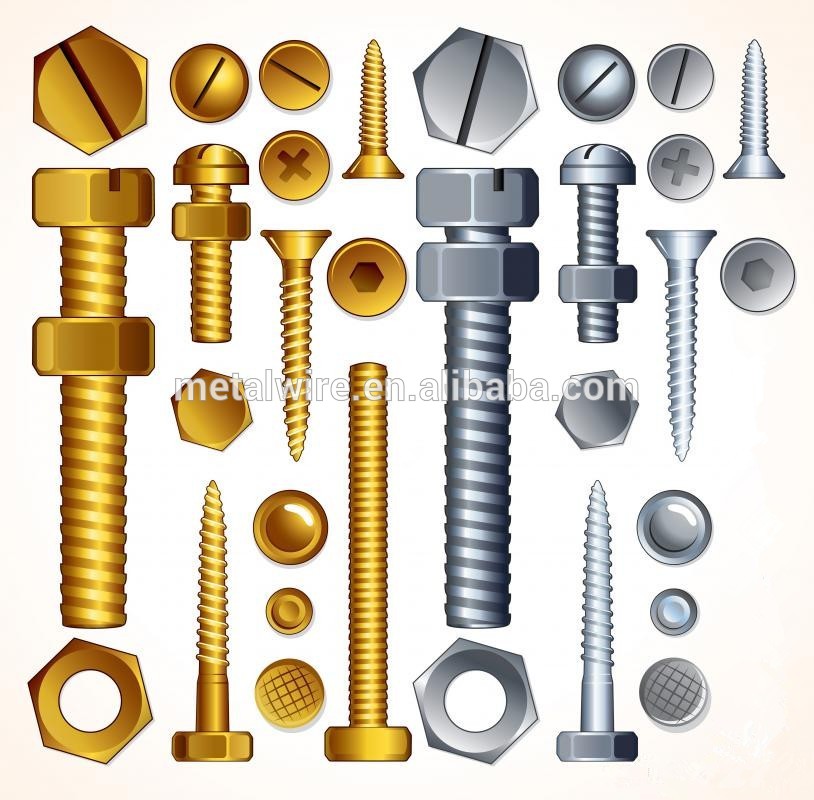
The primary benefit offered by drywall screws is their countersunk heads. This means that the entire screw lies flush with the surface of the sheet, creating a smooth and even finish. The countersunk head also helps prevent the drywall screw from breaking the paper surface, a common problem with nails.
There are two basic types of drywall screw for installers to choose from. Type “W” units, or wood screws, have wide, coarse threads. They are used for wood framed buildings, where their coarse threading helps them to securely grip the wood. Type “S” screws are designed for use with steel framing members. They have a sharp, notched head that can easily penetrate the steel framing, as well as fine threads that are designed to pass through the steel.
Drywall screws are a type of self-tapping fastener, which means that there is no need to pre-drill holes. These screws almost always have a Phillips head rather than a slotted head, which provides additional control for installers. Instead of a standard drill, installers use a tool known as a drywall dimpler, which has an adjustable nose to install a drywall screw without tearing the paper on each sheet.
A standard drywall screw can be readily identified by its black finish. This black coloring comes from a phosphate mineral coating that is applied to these screws. This coating helps to minimize rusting and corrosion as the screws are exposed to wet joint compound or paint.

 3.drywall screw’s installation. Have you wondered how to install drywall? It involves using a whole host of tools. Fortunately, when it comes to anchoring drywall to studs, it is back to the basics. With just a few screws, nails, a hammer and a drill, you will be able to achieve beautiful results. Not all nails and screws, however, are appropriate for use on drywall. There are a number of fasteners specially designed for use on drywall that will provide a strong hold while allowing for easy countersinking. Motivated do-it-yourselfers should have little trouble tracking down the pieces they need and securing them in place.
3.drywall screw’s installation. Have you wondered how to install drywall? It involves using a whole host of tools. Fortunately, when it comes to anchoring drywall to studs, it is back to the basics. With just a few screws, nails, a hammer and a drill, you will be able to achieve beautiful results. Not all nails and screws, however, are appropriate for use on drywall. There are a number of fasteners specially designed for use on drywall that will provide a strong hold while allowing for easy countersinking. Motivated do-it-yourselfers should have little trouble tracking down the pieces they need and securing them in place.
Consider the following questions to determine the best fasteners for your next drywall project:
• What types of nails can be used on drywall?
• What types of screws can be used on drywall?
• Which fasteners are best for wooden studs? Which are better on metal?
• How can you successfully repair “nail pops?"
• What tools will assist you in securing fasteners properly?
Screws and Installation Considerations
It may seem an obvious point, but the most important function of drywall fasteners is to keep drywall in place without popping back out. This, however, is sometimes easier said than done. If you use nails and screws that are not designated for drywall use, you will find them popping back up left and right. Even when you use appropriate fasteners, this phenomenon can sometimes occur. Therefore, it is important to know which fasteners provide the best hold, how you can enhance the strength of that hold using adhesive and how you can quickly and easily repair the problem if it should occur.
Nails: There are three commonly found types of nails used for securing drywall. Nails are used to secure drywall only to wooden studs. Drywall nails have a ringed or barbed shank that gives them greater holding power once they are driven in. Cement-coated drywall nails have a smooth shank, but they are coated with resin to increase their holding power. Cupped-head nails feature a rounded head that is easier to countersink, helping you achieve a smooth finish.
Nails should be hammered in until they are slightly below the surface, or dimpled. Once this is accomplished, use joint tape and compound to cover the indentations.
• Drywall nails have large heads to make striking easier
• Phosphate coating helps nails resist corrosion and allows paint to adhere more easily
• Use a drywall hammer to countersink nails without tearing the paper
• Annular-ring nails work well when installing drywall on ceilings
Screws: Nails do a good job of keeping drywall in place, but screws provide an even more secure hold, though they do cost a little bit more. Coarse drywall screws feature coarse threads and are used to secure gypsum board to wood. Fine drywall screws on the other hand, feature smaller threads and are used to attach drywall to metal studs.
Self-drilling drywall screws and pan-head framing screws are also used when working with metal studs or frames. Because they don’t require pounding, screws are less likely to damage the surface during insertion and, when working with soft woods, they are often self-countersinking.
• Screws may be used to fasten drywall to both wooden and metal studs
• Can be driven in with a drill or electric drywall screw gun
• Trim-head screws are used to attach wood trim over single or double layers of gypsum boards to either
wood or steel stud
• Most drywall screws feature a Phillips head
nstallation Considerations: In order to properly secure drywall, you will need to use the right number of fasteners. Some municipalities have building codes that dictate the exact number of screws or nails that should be used, so make sure to consult local codes before beginning your project. If you are using nails, you may experience a few nail pops. Nail pops occur when wooden studs lose moisture and shrink slightly, exposing nails (and, on occasion, screws) and causing them to pop out slightly.
4. drywall screws' more feature
When this happens, drive a nail or screw just above or below the one that’s popped out to secure the drywall. You can then either remove or reinsert the popped fastener, depending on the circumstances. Afterward, use joint compound to repair the hole or dimple and cover with tape.
• When working with 1/2-inch drywall, use 1-1/4 or 1-3/8-inch nails
• When working with 5/8-inch drywall, use 1-3/8 or 1-5/8-inch nails
• In most cases, securing drywall will require fewer screws than nails
• Double-nailing panels will help minimize the occurrence of nail pops
• Nails can be used on wooden studs while screws can be used on wood and metal.
Features
Drywall Hammer: In order to achieve a smooth finish on your drywall, you need to drive nails in properly by pounding them in just below the surface without tearing the paper. This can be extremely difficult with a regular hammer. A drywall hammer has a rounded head that allows you to countersink nails with ease without marring the surface of the wall.
Electric Drywall Screw Gun: Just as nails must be properly inserted for drywall to have a smooth, flawless finish, so too must screws be driven in correctly. If you have a big job to do, a cordless electric drywall screw gun will be highly useful. While an electric drill will certainly get the job done, a screw gun has an adjustable nosepiece that regulates depth, allowing for accurate insertion every time. Some are even self-feeding.
Drywall Adhesive: One way to help minimize nail pops and other fastening issues is to use drywall adhesive in conjunction with nails or screws. This sticky substance can be used to glue down the center of the drywall, meaning that nails and screws only need to hold down the edges.


Detailed Images 

About us



 We are a modern company and exporter of metal wires、nails ,drywall screws ,fasteners products since 1984.
We are a modern company and exporter of metal wires、nails ,drywall screws ,fasteners products since 1984.
Our products are mainly exported to foreign countries, such as the USA, Canada, Italy, Japan, Germany, Southeast Asia, South America, The Middle East, Africa, Brazil, Chile, and more than 80 region and countries. With competitive price, good reputation and prompt delivery, we have established regular business relationship with many foreign customers.

 Welcome to contact us
Welcome to contact us
Coco Guo
WhatsApp:008615716988924
Mobile phone no:008615716988924
 Contact us if you need more details on Drywall Screw. We are ready to answer your questions on packaging, logistics, certification or any other aspects about Drywall Screw、Drywall Screw. If these products fail to match your need, please contact us and we would like to provide relevant information.
Contact us if you need more details on Drywall Screw. We are ready to answer your questions on packaging, logistics, certification or any other aspects about Drywall Screw、Drywall Screw. If these products fail to match your need, please contact us and we would like to provide relevant information.
 drywall screw manufacturer Details
drywall screw manufacturer Details .drywall screw’s size is as below:
Description Drywall Screw PH2 - BZP
Colour/Plating Zinc
Recess Type Phillips
Pack Type Box
Selling Unit 1
MOQ 1
Pack Qty (Pcs) 500
Head Type Bugle
2. What is drywall screw? drywall is a type of building material made from gypsum and other minerals pressed between sheets of heavy paper. It is installed on walls and ceilings using a type of fastener known as a drywall screw. This fastener can be used to secure the drywall to either wood or metal framing members, and is designed to minimize dimpling on the face of the walls. Traditional nails tend to leave small holes in or divots in the drywall, and can even come loose over time. Drywall screws are threaded to grip both the drywall and the framing members tightly, and provide a much more secure and long-lasting installation over time.
In a typical installation, a drywall screw is placed into each sheet every 16 inches (40.6 cm) on center. This 16-inch increment represents the center of each framing member, or stud. After all the screws have been installed, the walls are finished using joint compound. The joint compound is spread over both the screw holes and the joints between each sheet. Once the compound dries, the walls can be sanded smooth and painted.


The primary benefit offered by drywall screws is their countersunk heads. This means that the entire screw lies flush with the surface of the sheet, creating a smooth and even finish. The countersunk head also helps prevent the drywall screw from breaking the paper surface, a common problem with nails.
There are two basic types of drywall screw for installers to choose from. Type “W” units, or wood screws, have wide, coarse threads. They are used for wood framed buildings, where their coarse threading helps them to securely grip the wood. Type “S” screws are designed for use with steel framing members. They have a sharp, notched head that can easily penetrate the steel framing, as well as fine threads that are designed to pass through the steel.
Drywall screws are a type of self-tapping fastener, which means that there is no need to pre-drill holes. These screws almost always have a Phillips head rather than a slotted head, which provides additional control for installers. Instead of a standard drill, installers use a tool known as a drywall dimpler, which has an adjustable nose to install a drywall screw without tearing the paper on each sheet.
A standard drywall screw can be readily identified by its black finish. This black coloring comes from a phosphate mineral coating that is applied to these screws. This coating helps to minimize rusting and corrosion as the screws are exposed to wet joint compound or paint.

 3.drywall screw’s installation. Have you wondered how to install drywall? It involves using a whole host of tools. Fortunately, when it comes to anchoring drywall to studs, it is back to the basics. With just a few screws, nails, a hammer and a drill, you will be able to achieve beautiful results. Not all nails and screws, however, are appropriate for use on drywall. There are a number of fasteners specially designed for use on drywall that will provide a strong hold while allowing for easy countersinking. Motivated do-it-yourselfers should have little trouble tracking down the pieces they need and securing them in place.
3.drywall screw’s installation. Have you wondered how to install drywall? It involves using a whole host of tools. Fortunately, when it comes to anchoring drywall to studs, it is back to the basics. With just a few screws, nails, a hammer and a drill, you will be able to achieve beautiful results. Not all nails and screws, however, are appropriate for use on drywall. There are a number of fasteners specially designed for use on drywall that will provide a strong hold while allowing for easy countersinking. Motivated do-it-yourselfers should have little trouble tracking down the pieces they need and securing them in place.Consider the following questions to determine the best fasteners for your next drywall project:
• What types of nails can be used on drywall?
• What types of screws can be used on drywall?
• Which fasteners are best for wooden studs? Which are better on metal?
• How can you successfully repair “nail pops?"
• What tools will assist you in securing fasteners properly?
Screws and Installation Considerations
It may seem an obvious point, but the most important function of drywall fasteners is to keep drywall in place without popping back out. This, however, is sometimes easier said than done. If you use nails and screws that are not designated for drywall use, you will find them popping back up left and right. Even when you use appropriate fasteners, this phenomenon can sometimes occur. Therefore, it is important to know which fasteners provide the best hold, how you can enhance the strength of that hold using adhesive and how you can quickly and easily repair the problem if it should occur.
Nails: There are three commonly found types of nails used for securing drywall. Nails are used to secure drywall only to wooden studs. Drywall nails have a ringed or barbed shank that gives them greater holding power once they are driven in. Cement-coated drywall nails have a smooth shank, but they are coated with resin to increase their holding power. Cupped-head nails feature a rounded head that is easier to countersink, helping you achieve a smooth finish.
Nails should be hammered in until they are slightly below the surface, or dimpled. Once this is accomplished, use joint tape and compound to cover the indentations.
• Drywall nails have large heads to make striking easier
• Phosphate coating helps nails resist corrosion and allows paint to adhere more easily
• Use a drywall hammer to countersink nails without tearing the paper
• Annular-ring nails work well when installing drywall on ceilings
Screws: Nails do a good job of keeping drywall in place, but screws provide an even more secure hold, though they do cost a little bit more. Coarse drywall screws feature coarse threads and are used to secure gypsum board to wood. Fine drywall screws on the other hand, feature smaller threads and are used to attach drywall to metal studs.
Self-drilling drywall screws and pan-head framing screws are also used when working with metal studs or frames. Because they don’t require pounding, screws are less likely to damage the surface during insertion and, when working with soft woods, they are often self-countersinking.
• Screws may be used to fasten drywall to both wooden and metal studs
• Can be driven in with a drill or electric drywall screw gun
• Trim-head screws are used to attach wood trim over single or double layers of gypsum boards to either
wood or steel stud
• Most drywall screws feature a Phillips head
nstallation Considerations: In order to properly secure drywall, you will need to use the right number of fasteners. Some municipalities have building codes that dictate the exact number of screws or nails that should be used, so make sure to consult local codes before beginning your project. If you are using nails, you may experience a few nail pops. Nail pops occur when wooden studs lose moisture and shrink slightly, exposing nails (and, on occasion, screws) and causing them to pop out slightly.
4. drywall screws' more feature
When this happens, drive a nail or screw just above or below the one that’s popped out to secure the drywall. You can then either remove or reinsert the popped fastener, depending on the circumstances. Afterward, use joint compound to repair the hole or dimple and cover with tape.
• When working with 1/2-inch drywall, use 1-1/4 or 1-3/8-inch nails
• When working with 5/8-inch drywall, use 1-3/8 or 1-5/8-inch nails
• In most cases, securing drywall will require fewer screws than nails
• Double-nailing panels will help minimize the occurrence of nail pops
• Nails can be used on wooden studs while screws can be used on wood and metal.
Features
Drywall Hammer: In order to achieve a smooth finish on your drywall, you need to drive nails in properly by pounding them in just below the surface without tearing the paper. This can be extremely difficult with a regular hammer. A drywall hammer has a rounded head that allows you to countersink nails with ease without marring the surface of the wall.
Electric Drywall Screw Gun: Just as nails must be properly inserted for drywall to have a smooth, flawless finish, so too must screws be driven in correctly. If you have a big job to do, a cordless electric drywall screw gun will be highly useful. While an electric drill will certainly get the job done, a screw gun has an adjustable nosepiece that regulates depth, allowing for accurate insertion every time. Some are even self-feeding.
Drywall Adhesive: One way to help minimize nail pops and other fastening issues is to use drywall adhesive in conjunction with nails or screws. This sticky substance can be used to glue down the center of the drywall, meaning that nails and screws only need to hold down the edges.




About us




 We are a modern company and exporter of metal wires、nails ,drywall screws ,fasteners products since 1984.
We are a modern company and exporter of metal wires、nails ,drywall screws ,fasteners products since 1984.Our products are mainly exported to foreign countries, such as the USA, Canada, Italy, Japan, Germany, Southeast Asia, South America, The Middle East, Africa, Brazil, Chile, and more than 80 region and countries. With competitive price, good reputation and prompt delivery, we have established regular business relationship with many foreign customers.

 Welcome to contact us
Welcome to contact us Coco Guo
WhatsApp:008615716988924
Mobile phone no:008615716988924
 Contact us if you need more details on Drywall Screw. We are ready to answer your questions on packaging, logistics, certification or any other aspects about Drywall Screw、Drywall Screw. If these products fail to match your need, please contact us and we would like to provide relevant information.
Contact us if you need more details on Drywall Screw. We are ready to answer your questions on packaging, logistics, certification or any other aspects about Drywall Screw、Drywall Screw. If these products fail to match your need, please contact us and we would like to provide relevant information. Product Categories : Self-drilling Screw
Premium Related Products
Other Products
Hot Products
umbrella head roofing nailManufacture in China screw priceManufacturers of furnitures ling size big umbrella nail polishChina supplier security wall spikesChina factory high quality low price black drywallgalvanized iron wire binding galvanized iron wirecommon nail/galvanized iron nailChinese biggest supplier for razor barbed wireBTO-28 single coil age resistance razor wire for DubaiAnping Wei hao provide galvanized barbed wire/PVC barbed wire/barbed wire for salegalvanized drywall screw/coarse thread 3.9*35 mm drywall screw for Americametal roofing fasteners/self drilling screw/self tapping screwHeadless self tapping screwblack annealed wireGood Quality S.S Plain Woven Wire Mesh (20 Years Professional Factory),High Quality S.S Woven Wire Mesh/ScreenHDPE Plastic Barrier Fencing Netting
